Today in Tedium: So much of the content we experience on the modern internet appears in video format, whether as a pre-downloaded clip or, more commonly, though a streaming interface. And while modern standards have somewhat made the discussion around the “best” video format somewhat moot, the side effect of that is that it left a a whole bunch of dead or decaying formats in its wake. As you know about us over at Tedium HQ, we love things that didn’t make it, and with that in mind, whether we’re talking codecs, container formats, or the technologies that delivered those things, today’s Tedium discusses the video tech that didn’t see its way through to the modern day. (Have complaints? See the disclaimer.) — Ernie @ Tedium
Keep Us Moving! Tedium takes a lot of time to work on and snark wise about. If you want to help us out, we have a Patreon page where you can donate. Keep the issues coming!
We accept advertising, too! Check out this page to learn more.
1. Commodore CDXL
Era: Early ’90s
Most common file extension: .CDXL
The hard part about being first to market is that you often have to build the technology yourself. Call it the Pets.com rule.
And it was definitely in play when it came to the Commodore CDTV, a multimedia tool that represented one of the first CD-ROM based consoles to hit the mainstream market. Essentially a consolized Commodore Amiga (complete with caddy), the system required its own proprietary technology to run full-motion video, as mainstream standards such as MPEG did not exist at the time the company was developing its technology, which it patented. Unlike similar standards, no compression as used on the video.
One advantage the company had was their custom chipsets, which could capably handle video, though that meant the technology didn’t reach far beyond the Amiga platform—though it was later improved for the later CD32 platform, which was more intended for video games than the CDTV was. However, despite the limitations, the Amiga fandom is such that CDXL is still seeing improvements in the modern day through efforts such as AGABlaster.
2. Cinepak
Era: Early ’90s
Most common file extension: Often wrapped in .AVI or .MOV files, but also in .CPK
If you watched full motion video on a CD-ROM before, say, 1995, the way you did so was probably thanks to the Cinepak codec, which had the tough task of trying to compress video and audio into something small enough to run off a CD-ROM in real time—which Cinepak, developed by the company SuperMac Technology, excelled at.
There were problems, however. The resolution topped out at 320x240—which meant that it was blocky in fullscreen mode—and worse, it was time-consuming to encode, as it did not initially use dedicated hardware. As InfoWorld recalled in 1993:
But the time SuperMac saved on the playback side added greatly to the amount of time it took a content developer to compress a Cinepak file, [SuperMac Director of Business Development Daniel] Wald added. One second of video would take approximately 3 minutes to compress, he explained.
The Cinepak codec, despite its limitations and challenges for developers, was widespread in certain contexts. For example, many Sega CD-ROM based games, both for the Genesis and Saturn, utilized Cinepak for video compression (as highlighted in the video above), though a successor technology, TrueMotion, eventually appeared on the Saturn.
This looks pretty good, right? Now imagine it on a 56k modem.
3. RealVideo format
Era: Late ’90s
Most common file extension: .RV
RealPlayer, as we’ve noted in the past, played an important role in introducing the concept of internet-based audio to consumers. However, it also had a legacy in video.
The RealVideo format, based on the H.263 standard for video compression originally used for video calls, helped to bring video to modems, but did so in a very staggered “buffer” format. It was slow and blocky and painful, but it was better than the alternatives of the time, so it got a pass.
This capability, uncommon for the time, was very novel when it was first released—as highlighted by the fact that in early 1998, a couple actually drew well-wishers from around the world when they streamed their wedding in RealVideo format.
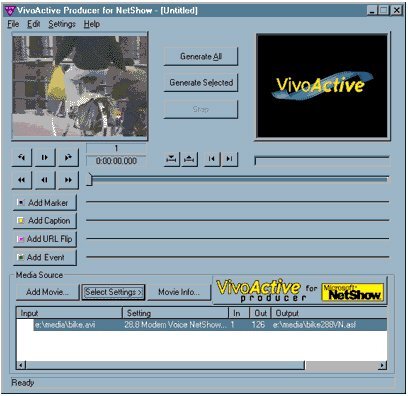
4. VivoActive format
Era: Late ’90s
Most common file extension: .VIV
Not to be mistaken for Garmin’s brand of smart watches nor the smartphone company living at its domain name, VivoActive became a notable player in the history of internet video, thanks to the software’s ability to stream in poor-quality situations, much as its more popular competitor RealPlayer did.
Early on, the software was pitched as being well-suited for videoconferencing, but ultimately found use as an early video streaming technology thanks to the VivoActive Producer software. (The software’s Wikipedia page suggests, in an unsourced line, the it was a technology used on early erotic sites. That seems like a tough thing for me to source without getting a virus on my computer, so I’m going to pass it off as hearsay, and point out that other sources suggest it was used by large companies like ABC.)
RealNetworks, in a dogfight with Microsoft, ended up buying the technology from its creator Vivo Networks in 1998 for a reported $17.1 million in stock.
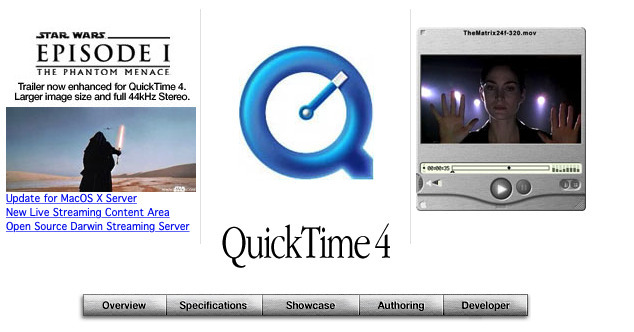
(via AppleInsider)
5. The version of Apple’s QuickTime format that used the Sorenson video codec
Era: Late ’90s
Most common file extension: Wrapped in .MOV
It may be hard to square in the modern day, but there was once a time when video trailers were a huge deal online, in part because of their ability to give viewers the taste of an experience.
Nobody knew this better, surprisingly, than Apple. The company, building out its digital video bonafides in the late ’90s, became known as the place to get high-quality film trailers thanks to a little film called Star Wars Episode I: The Phantom Menace, which blew up the internet in early 1999 when Apple put a 480x216 trailer for the film on its site. That doesn’t sound like a lot today, but it was massive compared to what you could get from platforms like Windows Media Player and RealPlayer.
While the internet technology firm Akamai was credited for making the download portion of the video work, Apple’s collaborations with a firm called Sorenson, which specializes in video codecs, were the secret sauce to get such a high-quality video in a relatively small size. While Apple only emphasized the Sorenson codec for a few years before favoring more industry-standard technology like MPEG-4, the codec’s exclusivity came in handy when Apple started putting high-quality trailers on its website. Windows computers couldn’t play them—unless users downloaded QuickTime.
While QuickTime’s legacy remains in MacOS today thanks to the widely used QuickTime Player, the underlying technology that initially enabled QuickTime has been replaced and de-emphasized by Apple, with the company retiring the pro and Windows versions of the software as it moved away from 32-bit applications and replacing its feature set with the modernized AVFoundation.
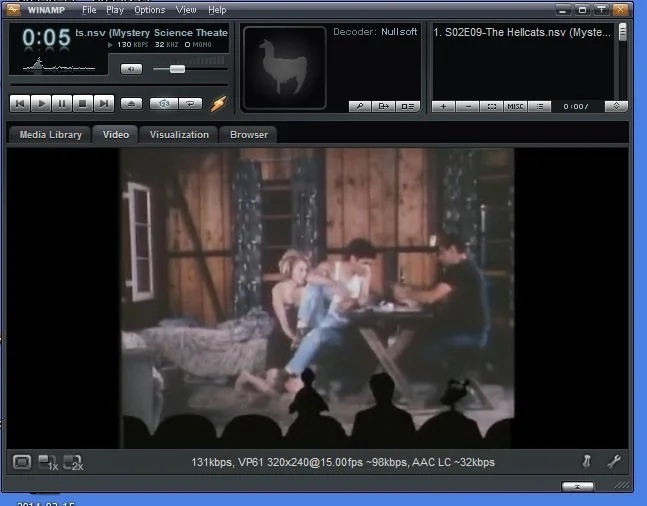
(via Reddit)
6. Nullsoft Streaming Video (.NSV) format
Era: 2000s
Most common file extension: .NSV
Nullsoft, the makers of Winamp, tapped their toes into a variety of media-industry puddles during the late-’90s and early 2000s, when the company came up with this file format, which was used to stream videos over its Shoutcast streaming platform, which is still active today, surprisingly.
As with everything Nullsoft related, its acquirer AOL kind of ruined it, however; in 2010, the popular open-source player VLC removed Shoutcast because of a requirement that the format be distributed with a browser toolbar, which the makers of VLC characterized as “spyware.” (It replaced Shoutcast with an open-source equivalent, Icecast.)
Nonetheless, if you want to launch your own Nullsoft video feed in 2022, you can find lots of resources to do so on SCVI.net. You, too, can run your own TV station with no additional help from YouTube.

Some of these phones could play video thanks to 3GP and 3G2. (Erik Solheim/Unsplash)
7. 3G video file formats
Era: 2000s
Most common file extension: 3GP, 3G2
As we’ve noted in the past with lists like these, the rise of mobile technology has been a factor in the creation of obscure formats, and one of the most obscure are the video formats designed to work on 3G cell phones.
This format, called a container format as it wraps different data streams into a single package, was designed to deliver content at small sizes. The technology itself was standards-based, utilizing MPEG-4 video codecs and AMR or AAC-based audio formats, and used on a variety of devices, including most 3G-capable phones. Even some video game consoles, such as the 3DS, used the format.
While still technically in use today, Apple dropped playback support for these formats in iOS seven years ago, which likely had the effect of killing the format for any sort of modern use cases.
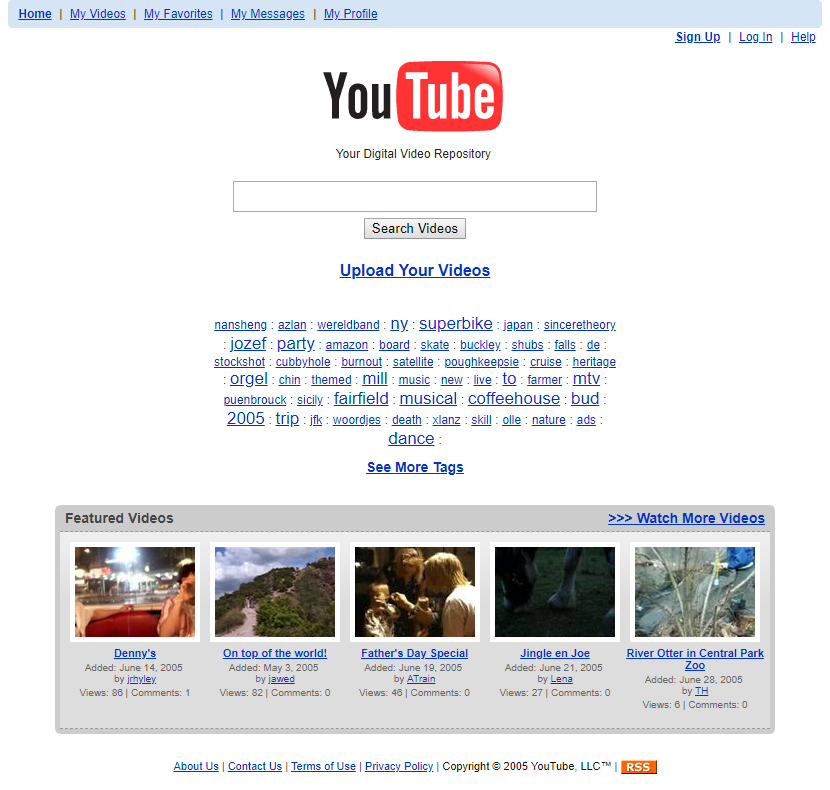
YouTube made Flash video famous. (via Web Design Museum)
8. Flash video format
Era: 2000s
Most common file extension: .FLV, .F4V
This format, because of the nature of its integration with Flash, became surprisingly pivotal to the modern internet, even if we don’t actually use it today.
Flash gained video support with 2002’s version 6, but then supported a separately named FLV format launched with version 7, released in 2003. In 2005, two important things happened: One, Adobe bought Macromedia, in large part because of the potential of Flash; and two, a little site called YouTube launched.
YouTube made it clear that streaming video was a killer use case for Flash, despite it not technically being designed for the approach. Nonetheless, the popularity of Flash as a video player use case would prove short-lived as a result of the release of HTML5—and Apple’s famous refusal to support Flash on iOS.
In many ways, despite its obsolescence—Adobe deprecated the format at the same time it killed off Flash—it’s likely the most important format on here, just because of what it enabled.
(Fun fact: After Apple dropped the Sorenson codec, its successor, Sorenson Spark, found a home within Flash, though it was eventually removed there as well.)
This wasn’t exactly a popular use case for Windows, but it had a dedicated fan base.
9. Microsoft’s copy-protected DVR formats
Era: 2000s
Most common file extension: .DVR-MS, later .WTV
For a time, Microsoft had dreams of making Windows the center of your media environment, and with that goal, the company launched a media center version of Windows in 2002, allowing the operating system to manage photos, audio and video files, optical discs, and even live-TV inputs through a single unified interface.
Thanks to the ability to use Windows as a TV tuner—a technology supported for years by third-party apps before it was baked into the operating system itself—crated the need for two unusual container formats that attempted to introduce DVR functionality to Windows. It was such an in-depth feature for the operating system that Microsoft even supported CableCARD as of Windows Vista, making it functionally similar to a TiVo.
These formats were notable for baking in copy protection at the behest of content providers; the earlier DVR-MS, for example, prevented content from being played on any machine other than the one in which it was recorded.
However, Microsoft eventually de-emphasized the approach, disbanding the team that built it after the release of Windows 7, and Windows 10 dropped support for the technology entirely.
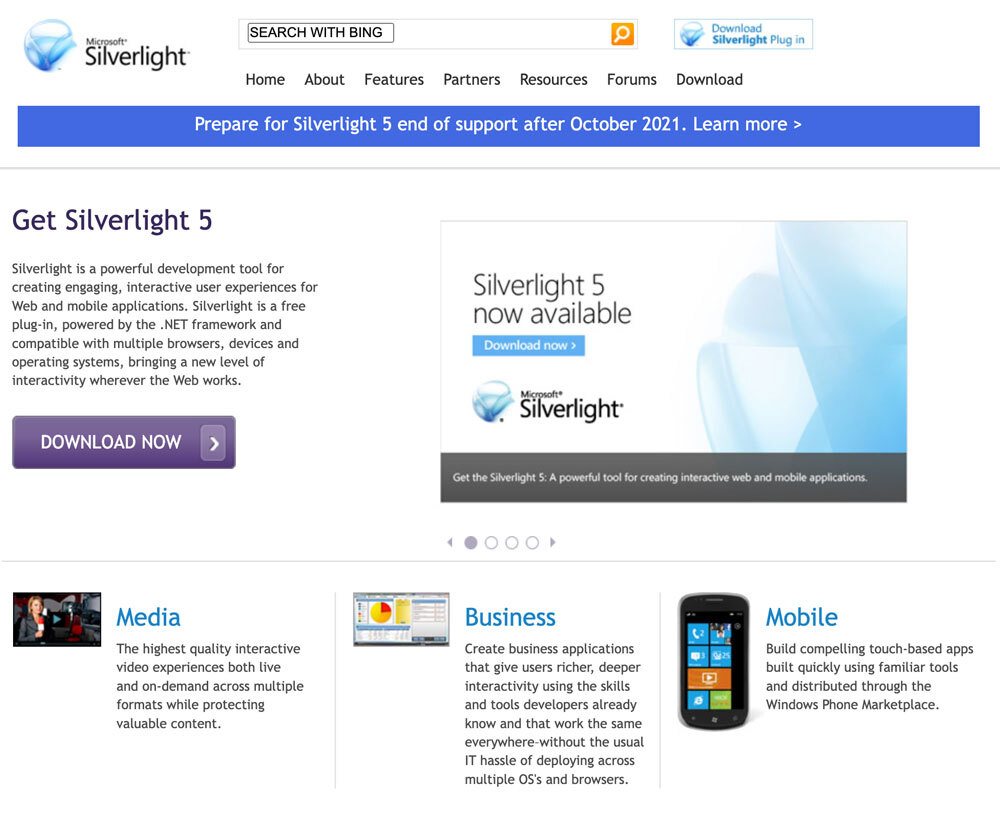
The website for Silverlight is still up in case you want to take a look.
10. Microsoft Silverlight
Era: Late 2000s, early 2010s
Most common file extension: WMV, later MP4
While I think it’s technically bending the rules to mention Silverlight in this context, I think it’s nonetheless important to highlight here in part because the format is something of a placeholder for the decline of the WMV format, which is still in use today, though its most common use case has faded.
Silverlight’s copy-protection capability was an important part of what made the technology, otherwise an also-ran to Flash, viable. (Adobe did offer a copy-protection scheme, to be clear.) The technology quickly attracted big players, most notably Netflix, which initially made it the driving technology behind its streaming service. But it eventually became apparent that a plug-in-driven streaming service was going to be a problem long-term; Silverlight was being hit by security exploits just as Flash was, and the software didn’t run so well on Macs because it wasn’t supported in Safari.
After Netflix dropped the software in 2013 in favor of the industry-standard HTML5, Microsoft saw the writing on the wall and stopped developing the tool in 2015, retiring it around the same time Flash was retired.
Lots of people still use WMV videos out there—but odds are that you’re not using them in a heavily copy-protected format, as was initially intended.
Video is an interesting beast, in part because of how specific use cases can help popularize certain formats.
For example, one could make the case that the popularity of torrent sites likely made the proprietary DivX codec (not to be confused with the proprietary DIVX format) and the open-source XviD codec popular with general consumers, as they were commonly used to rip video from DVDs and other similar formats during the early 2000s.
Likewise, Flash video fits into the same category because it could leverage an existing Trojan horse—the fact that everyone with a desktop computer likely already had a Flash plug-in—to deliver streaming video to their machines. I don’t think Flash video had its brief moment in the sun because it was the best option. It was simply the most convenient, and when that was no longer the case, it quickly was replaced.
In some ways, this evolution is a bit of a change from the approaches used during previous generations of video uptake, when standards helped to drive new approaches. But there was a period during the early 2000s when it seemed like, despite all the technical work being done to shape the way we used video, it was the needs of the consumer that eventually led the way.
Nowadays, we take for granted the codecs and video formats we use, to the point where we don’t even think about them. It’s actually kind of amazing, as end users, that we don’t have to. They just work. That’s the power of standardization for ya.
--
Find this one an interesting read? Share it with a pal! May your next video experience be buffer-free and take place over a fast, reliable connection.





